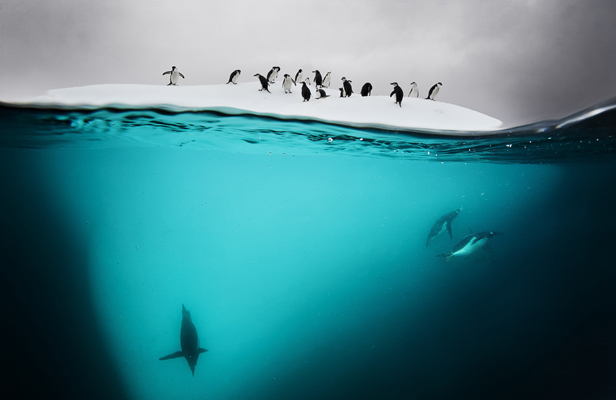
It’s not your typical romance – meeting your future wife while photographing a shark giving birth in the Bahamas. But nothing is typical about the life of National Geographic photographer David Doubilet.
Wellingtonians will journey into Doubilet’s world when he shares stories and photographs at Te Papa next month.
Working for the international publication was one of the greatest jobs anyone could have, he said.
Doubilet has spent 43 years photographing ocean life.
He and his wife, aquatic biologist Jennifer Hayes, have worked together since meeting over a shark’s birth more than 10 years ago in the Bahamas.
“[Jennifer] was working on her masters degree and I came down to photograph the birth. Low and behold, I photographed a shark giving birth,” he said.
When they are not exploring the world, the couple live on the edge of the St Lawrence river between Ontario, Canada and New York state.
The river empties into the St Lawrence Gulf, where natural gas and oil has been found.
“Few people know how rich the St Lawrence gulf is,” Doubilet said.
Not many people decide on a career at 12, but Doubilet dived straight into photography.
“I grew up in New Jersey and New York City. When I began going underwater at age 12, I was always taking a camera.
“The first time I put my head underwater was in the Adirondack Mountains [aged 8] at a summer camp.
“There was a vision in front of me that was beyond dreams. I was free. I could breathe.
“It really did change the direction of my life. I knew what I wanted to be doing.”
Light and colours behaved differently underwater, he said.
“It’s exceptionally complex. The sea is weightless.
“Light disappears after 200 feet and colours disappear in the first few feet. But by bringing light through an electric flash on a reef bottom, it restores the whole spectrum of colour and illuminates the bottom, which is brilliantly colourful.”
Underwater photography is not a job for the faint-hearted.
“There’s joy and danger. Underwater, at best, you can see 30 metres. Our cameras at least give us some form of protection from an aggressive shark.”
Underwater photography was a new and important art form because it documented unseen beauty that would not last forever, Doubilet said.
“The history of underwater photography is only 30 years old, so we’re looking at new visions and worlds within our small and very overcrowded planet.
“The sea is really the entry to the earth and right now a lot of our seas are in trouble.
“Thirty years from now, the Coral Triangle will not be recognisable. The best thing we can do is try to open people’s eyes to the sea and show them what we must protect.”
Part of being a photographer meant facing the unexpected, like witnessing a tiger shark feeding on the remains of a sperm whale.
“An adventure is when everything you wanted to go right goes wrong. An expedition is going into the unknown. Underwater, the unexpected is the norm. That’s one of the joys.”
Ad Feedback
Doubilet visited New Zealand’s “magic waters” in 1988, when he photographed the Three Kings Islands, Bay of Islands and Fiordland marine reserves.
During this year’s trip, his focus is on sharing his photos and stories to audiences.
In Coral, Fire, & Ice Doubilet will focus on his trips to Kimbe Bay in Papua New Guinea, sculptural icebergs and shipwrecks in the icy waters of Antarctica.
Coral, fire & ice: Explore Secret Underwater Worlds with David Doubilet, Te Papa, August 7, 7.30pm, tickets from ticketmaster.co.nz.
– The Wellingtonian